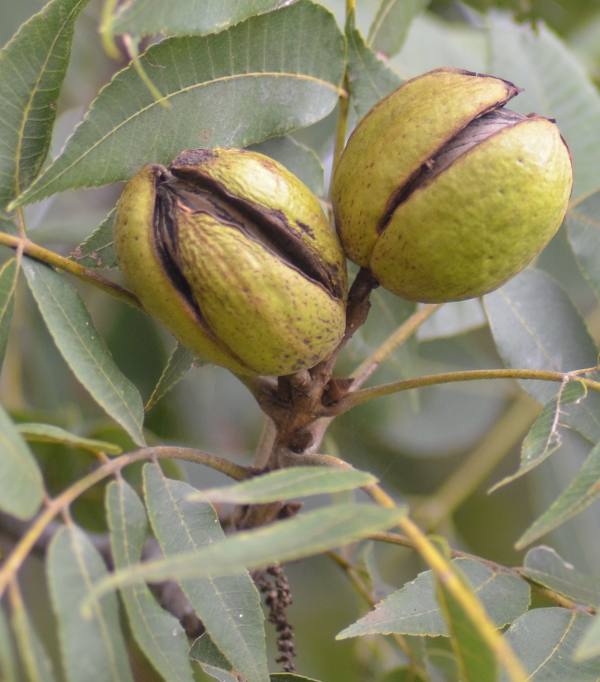
As early variety pecan harvest gets underway in South Texas, the bulk of commercial orchards across the Lone Star State, in Southern New Mexico, and across Oklahoma are preparing for a November start to a harvest expected to bring a combined three-state yield of some 120 to 130 million pounds of pecans.
While that number is significantly better than a drought-stressed pecan crop last year, not all news is good news for Southwest pecan growers.
Texas AgriLife pecan specialist Dr. Larry Stein says nut sizes in Texas may be a little smaller than usual, but says there is an abundance of pecans on Texas trees. (For more information on the Texas crop see: http://southwestfarmpress.com/orchard-crops/texas-pecan-crop-expected-be-about-65-million-pounds.) He says nut quality is relatively good across the state and nut flavor is good as well. The same is true for pecans in Southern New Mexico.
Woods Houghton, Eddy County Extension Service agriculture agent in Carlsbad, says trees are loaded with nuts but continuing drought conditions have sheared back hopes of a bumper year.
“Condition and flavor are still excellent so all in all it is going to be a good year. But until we see more rain, we’re probably not going to see great improvement in yields in New Mexico,” Houghton said.
He said hail storms in the spring damaged a large number of trees in Dona Ana County, but re-sprouted early enough to insure an adequate crop.
As in previous years, however, a strong Chinese market is expected to help keep the price of pecans at a profitable level. Monte Nesbitt, Texas AgriLife horticulture specialist in College Station, reports Chinese imports of U.S. pecans have continued to grow over the last eight years and he expects this year will be no exception. He points to last year’s 80 million pounds of pecan exports to China as a healthy sign that pecans have taken root in Chinese society.
Nesbitt credited a trade mission of U.S. pecan growers intent on taking their nut to the world for starting the pecan popularity in China. But he said other factors lined up to cause the surge as well.
Along with its ease of cracking and larger pieces, he added, the Chinese were also ready for pecans for other reasons: their large and growing middle class currently has more money to spend on fresh produce and Western, American food is in vogue in China.
But Houghton is not as optimistic about the Chinese market this year, and says as Mexico’s growing pecan industry begins to mature, pressure from global competition will become a factor U.S. growers should expect this year and in the years ahead.
Competition coming
“Economic conditions are not as good in China this year as compared to last year. How this might affect pecan exports is hard to say. But there is also a growing trend for increased pecan production in Mexico. A lot of pecan trees from Southern New Mexico have been headed across the border where they are ramping up large orchards that can produce large yields,” he said.
“In addition, Australia and Brazil have increased pecan yields to compete in the global marketplace, so U.S. growers are going to soon see some fierce competition globally from growing international production,”
But Houghton does agree that the U.S. domestic market is strong and steadily growing.
“We’re seeing pecans being used in recipes and foods in non-traditional ways, and pecans have also qualified as a heart-healthy food, so demand is growing domestically as a result,” he said.
In addition, he says New Mexico’s first certified organic pecan crop is expected to roll out over the next two years and he sees a niche market for growers interested in taking advantage of the organic movement.
Houghton says he remains hopeful that New Mexico will produce between 45 million and 50 million pounds, smaller than Texas’ estimated 65 million pounds this year. Oklahoma is expected to yield between 10 million and 15 million pounds.
Houghton expects the retail price to be equal to or slightly less than last year’s average $9.00 a pound, and economist are predicting wholesale prices to hover near last year’s $2.65 a pound or slightly less depending on yields and global demand.
About the Author(s)
You May Also Like




